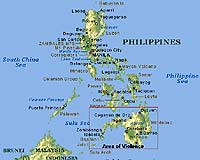 |
Teddington, UK (SPX) Aug 14, 2009 Researchers at the National Physical Laboratory (NPL) in Teddington have developed imaging technology to be used in an intelligent harvesting machine that could minimise wastage and solve an impending labour shortage for UK farmers. Annual waste for certain crops can be up to 60% - which can mean up to Pounds 100,000 of lost revenue for an average farm every year, according to farmers who were consulted during research. Falling number of migrant labourers means that healthy crops cannot be gathered and so farms are losing crops due to harvesting at the wrong time. NPL 's scientists are working with KMS projects and Vegetable Harvesting Systems (VHS) to turn the technology into an intelligent harvesting machine, which can look beneath the leafy layers of a crop, identify the differing materials, and enable precise size identification. This can be used to develop a fully automated harvesting robot, which would be able to fill the gap left by the labour shortage. The most appropriate technologies to use are radio frequencies, microwaves, terahertz and the far-infra red. These four parts of the electromagnetic spectrum all have potential to safely penetrate the crop layers and identify the size of the harvestable material for a relatively low cost. NPL has developed a methodology for crop identification and selection focusing on cauliflower crops, one of the hardest crops to measure due to the large amount of leafage that covers the vegetable. The researchers at NPL began by modifying microwave measurement systems to measure a cauliflowers structure. A series of measurements made on real crops in the laboratory and field enabled a statistical range of measurements for precise size identification. This data is then designed into an algorithm to enable a simple size indication from a raw measurement with uncertainties. The final technology will be developed for a first generation harvester and tested in a real farming environment. A successful demonstration of the imaging technology was given recently at the Fanuc Robotics site in Coventry, showing its huge potential for the harvesting of cauliflowers, lettuces and other similar crops. This has attracted further commercial support from G's, one of the largest lettuces grower in the UK, to take the project forward and develop the complete product, which could be available as early as next year. Project Lead, Dr Richard Dudley, at NPL said: "The farming industry does not have access to equipment or the skills required to operate in these parts of the electromagnetic spectrum, few places do. That is why KMS Projects and VHS came to NPL to utilise the world class expertise and equipment that we have on site to try and address this problem. Our aim is to develop a unique new automated harvesting machine that will dramatically improve productivity in the UK and global farming industry and ultimately benefit consumers through cheaper food in the supermarkets." Share This Article With Planet Earth
Related Links National Physical Laboratory Farming Today - Suppliers and Technology
 Philippines says to avoid recession, but drought may loom
Philippines says to avoid recession, but drought may loomManila (AFP) Aug 11, 2009 The Philippines is likely to avoid falling into recession this year, but drought could be a problem in 2010, a senior economic official said Tuesday. Rolando Tungpalan, undersecretary of the economic planning department, said President Gloria Arroyo's cabinet has discussed the "threat of possible drought later in the year or early 2010." "We simply had to flag that to temper expectations ... read more |
|
| The content herein, unless otherwise known to be public domain, are Copyright 1995-2009 - SpaceDaily. AFP and UPI Wire Stories are copyright Agence France-Presse and United Press International. ESA Portal Reports are copyright European Space Agency. All NASA sourced material is public domain. Additional copyrights may apply in whole or part to other bona fide parties. Advertising does not imply endorsement,agreement or approval of any opinions, statements or information provided by SpaceDaily on any Web page published or hosted by SpaceDaily. Privacy Statement |